|
Highlights
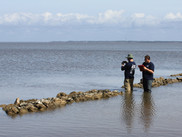
NOAA and partners restoring the Gulf of Mexico after Deepwater Horizon are seeking public input on a draft restoration plan proposing $99.6 million in projects across all five Gulf states through May 6. This plan includes a portfolio of projects restoring sea turtles, marine mammals, oysters, and birds. Join virtual public meetings on April 15 to learn more, engage with staff and give us your public comment on the plan. Contact: Jamie Schubert
|
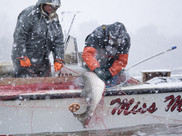
This report to Congress highlights the NOAA Chesapeake Bay Office’s recent accomplishments in advancing sustainable fisheries science, oyster restoration, oceanographic and meteorological observations, environmental literacy, and community partnerships throughout the Chesapeake Bay watershed. Contact: Kim Couranz
|
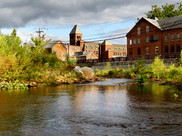
As we work to restore habitat for coastal and marine species, many of our projects also help protect coastal communities from flooding, erosion, and storms. Two NOAA Fisheries projects that have helped reduce flooding are highlighted in a new atlas from Engineering With Nature, an initiative led by the U.S. Army Corps of Engineers. Contact: Janine Harris
|

In March, while the teams dueled it out on the basketball court, we took a court-side look at how we protect and restore marsh habitat with an aim to sustain fisheries, recover protected species, and maintain resilient coastal ecosystems and communities. We added a “Marsh Mascot Championship” this year. Followers of @NOAAHabitat on Twitter voted the Beavers their favorite wetland-related mascot out of a tough field of eight competitors. Contact: Katie Wagner
|

Findings from a multiyear research program funded by the NOAA Chesapeake Bay Office are highlighted in a recently published NOAA Fisheries Technical Memorandum. “A Synopsis of Research on the Ecosystem Services Provided by Large-Scale Oyster Restoration in the Chesapeake Bay” includes summaries of nine research projects that sought to quantify benefits these restored reefs can bring to nutrient cycling, fish and crab habitat, and the area’s economy. Contact: Kim Couranz
|

Through a NOAA Veterans Corps internship, Air Force veteran Tillie Smith will begin a new journey restoring habitat and resources in Puget Sound, and gaining scientific experience to build a career in natural resources. As a member of the Fond du Lac Band of Ojibwe tribe in Minnesota, she developed a strong environmental ethic at an early age. Her work is supported by NOAA’s ongoing partnership with the Washington Department of Veterans Affairs. Contact: John Floberg
|
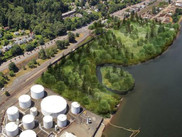
NOAA and partners finalized a plan to use an innovative approach to help restore Oregon’s Portland Harbor recover from pollution. They’re going to purchase restoration bank “credits” from third party restoration projects that are already built or will be built—which has multiple benefits, including getting to restoration sooner than more traditional approaches. Contact: Lauren Senkyr
|
|
|
Habitat Across NOAA
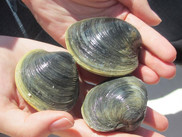
A new study estimates that oyster and clam aquaculture provides $2.8–5.8 million in services that remove excess nitrogen from the coastal waters of Greenwich, Connecticut. The study was conducted by shellfish biologists, economists, and modelers from NOAA and Stony Brook University. It was recently published in Environmental Science & Technology.
|
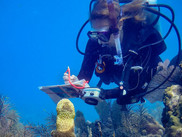
NOAA scientists have successfully treated and rehabilitated diseased pillar coral rescued from the Florida Reef Tract. Dr. Cheryl Woodley and her team are working to save pillar coral from stony coral tissue loss disease. Based on their trials of different treatments, the team developed a topical antibiotic-infused paste that can be applied directly to lesions in aquarium settings to arrest tissue loss and prevent coral death.
|
|
|
Announcements
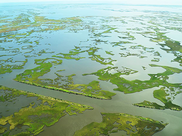
The Mid-Barataria sediment diversion plan proposes investing up to $2 billion into a large-scale project to reconnect the Mississippi River to Louisiana’s Barataria Basin. The project will release freshwater, nutrients, and sediment back into the basin to rebuild thousands of acres of wetlands and restore the basin’s ecosystem. The plan is open for public comment until May 4, 2021. Contact: Mel Landry
|
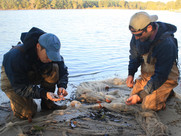
Apply by April 26 for up to $250,000 in total funding to support research into how key Chesapeake Bay fisheries species change their behavior to deal with changing habitat and climate.
|
|
|
|
|